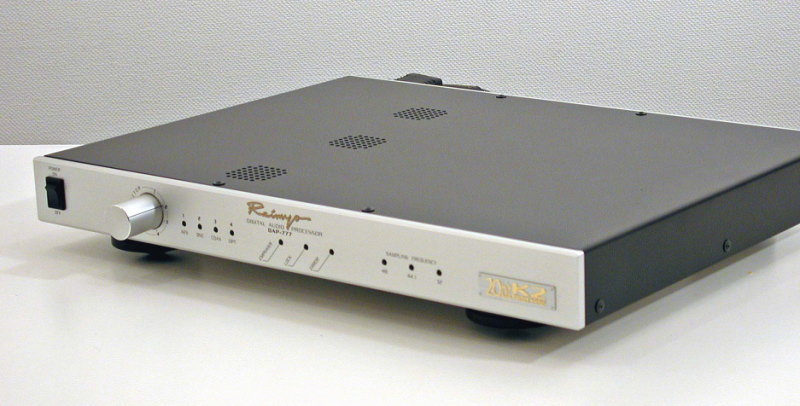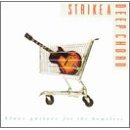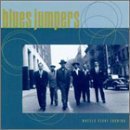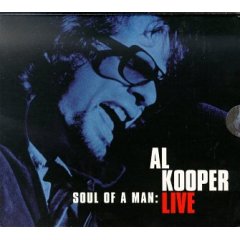Reimyo DAP 77 Digital-to-Analogue Converter
| Reimyo DAP 77 Digital-to-Analogue Converter |
| New and Improved |
|
|
|
June2007 |

So Many DACs, So Little Time
Over the years I have auditioned and owned a fair number of DACs and single-box CD players. Some upsampled, others did not; some had a tubed output, others solid state; some were moderately priced, others quite expensive, and still others were somewhere in between. While virtually all of them had some good (or very good) sonic properties, they invariably left me wanting…more.
My first exposure to the Reimyo line of electronics occurred approximately two years ago, at the Stereophile-sponsored Home Entertainment Expo. The Reimyo room was, as others have described it, something of a refuge from the typical over-bearing, overly-bright, hyper-detailed sound so common at such shows. The Reimyo room was warm and soothing, and filled with oodles of rich harmonics that brought tranquility to those who sat and listened. I knew immediately that I wanted to learn more about the Reimyo line.
The digital source in use was the incredible Reimyo CDP-777 CD player, which I had the pleasure of subsequently hearing at the home of my audio-buddy, Jules Coleman. To say that I was impressed with this player would be the understatement of the year. Unfortunately, no matter how much I rationalized, the bottom line was that its (approximately) $15,000 MSRP wouldn’t fit into…my bottom line. While wallowing in disappointment a few synapses fired and I recalled having read a glowing review by our editor Constantine Soo, of a Reimyo DAC which was more modestly priced than their CD player. I quickly read some other reviews of the Reimyo DAP-777 DAC, which concurred with Constantine’s impressions. After a telephone call to Constantine I decided to do something atypical for me, namely, to buy the DAP-777 sight unseen. For the last year the DAP-777 has provided constant enjoyment, and has impressed all who have heard it. When Reimyo announced earlier this year that the DAP-777 had undergone a series of upgrades, I was of course eager to try it out.
No DAC is an Island
I originally used the new DAP-777 as I had the older model, with a CEC TL1x transport. Part way through the review the CEC was replaced with a Sony CDP-707 ES, the transport section of which was heavily modified by Alex Peychev of APLHiFi. Speakers throughout the review process were the incredible Horning Agathon Ultimates. If you haven’t had a chance to hear this speaker, or one of Tommy Horning’s other models, I suggest you contact Jeff Catalano of High Water Sound in New York City, the U.S. importer, to arrange an audition. Amplification was via a Kondo Sound Labs M77 preamp and Tube Distinctions Soul amplifier, though on occasion I used a 47Labs GainCard. Equipment sat on racks from Harmonic Resolution Systems. The digital signal was conveyed from transport to DAC via a Stealth Audio Varidig Sextet cable. The analogue signal passed from DAC to preamp via a Stealth Indra interconnect, from preamp to amp via a Stealth GS-50-50 interconnect, and from amp to speaker via Stealth MLT hybrid speaker cables. Yes, I like Stealth cables.
Listening took place in my new dedicated listening room, the dimensions of which are 15’ x 21’ x 9’. In each corner is mounted a Mondo Trap from RealTraps, and in the ceiling-wall interfaces are a series of SoffitTraps (also from RealTraps). On the ceiling are hung ten Skyline Diffusors (Low Profile) from RPG. A series of absorbent panels are positioned on the side walls at the first reflections points, and immediately behind the listener.
For purposes of this review I compared the new DAP-777 to the older version.
We Have Ignition
Physically, the new unit is indistinguishable from the earlier model, except that the Reimyo name (on the face plate) is a slightly different shade. Rather than describing the arrangement of the inputs, controls and indicator lights, I will refer you to Constantine’s earlier review. I am pleased to report that the unit has performed flawlessly since the day it arrived.
The upgrades are as follows:
* The PCB has been redesigned to improve signal flow.
* The new unit higher-grade Harmonix tuning feet, the same ones used on the $14,000 CDP-777 CD Player.
* The new unit includes a newly designed, 1.5m long AC power cord as opposed to the 1.0m version from previous production.
* The new unit has more extensive application of Harmonix’ traditional and unique tuning technology.
*The weight of the unit has been increased from 4.7kg to 5.26kg.
It was apparent from the first listen that the newly designed unit was cut from the same sonic cloth as the older model. All the things that I liked were still there: the rich detail, the dynamics, and the harmonic smoothness were present in spades. However, the upgraded unit brought some added benefits. Most notable was a quieter background, which allowed more detail to be heard. I should emphasize that this was not the kind of hyper-detail that is so prevalent in audio nowadays, and which is characterized by an emphasis of certain frequencies. Rather, with the upgraded Reimyo, enhanced detail was heard throughout the frequency range. It never seemed forced or contrived but simply let more of the music flow through.
 An added effect of the darker background was improved microdynamics. That is, one can more clearly discern the attack, sustain and decay of notes, which gives the sense of the music being fuller and more complete. Moreover, the Reimyo DAP-777 does not tend to favor one part of the spectrum at the expense of others, a property which adds to its relative neutrality. This was especially apparent with stringed instruments, with which the DAP-777 truly excelled. Some noteworthy examples I used in my auditioning includedHeartland: An Appalachian Anthology (Sony SK 89683), which features (amongst others) Yo-Yo Ma on cello, Edgar Meyer on bass, Sam Bush on mandolin, Mark O’Conner on violin, and Bela Fleck on banjo; Steve Earl’s wonderful folk renditions on Train a Comin’(Winter Harvest Entertainment WH 3303-2); Jorma Kaukonen’s tribute to country music on Blue Country Heart (Sony CK 86394); and for blues, the incomparable Big Bill Broonzy’s Trouble in Mind(Smithsonian Folkways recordings LC 9628). In each case, instruments were reproduced with marvelous body and harmonics, and appropriate size and weight. Each retained its individuality, while blending beautifully with those accompanying it.
An added effect of the darker background was improved microdynamics. That is, one can more clearly discern the attack, sustain and decay of notes, which gives the sense of the music being fuller and more complete. Moreover, the Reimyo DAP-777 does not tend to favor one part of the spectrum at the expense of others, a property which adds to its relative neutrality. This was especially apparent with stringed instruments, with which the DAP-777 truly excelled. Some noteworthy examples I used in my auditioning includedHeartland: An Appalachian Anthology (Sony SK 89683), which features (amongst others) Yo-Yo Ma on cello, Edgar Meyer on bass, Sam Bush on mandolin, Mark O’Conner on violin, and Bela Fleck on banjo; Steve Earl’s wonderful folk renditions on Train a Comin’(Winter Harvest Entertainment WH 3303-2); Jorma Kaukonen’s tribute to country music on Blue Country Heart (Sony CK 86394); and for blues, the incomparable Big Bill Broonzy’s Trouble in Mind(Smithsonian Folkways recordings LC 9628). In each case, instruments were reproduced with marvelous body and harmonics, and appropriate size and weight. Each retained its individuality, while blending beautifully with those accompanying it.
![]() The new DAP-777 was equally adept at reproducing brass. Noteworthy examples include Norris Turney’s alto saxophone on Big Sweeet n Blue (Mapleshade MS 02632), Clifford Jordan’s tenor sax on Live at Ethel’s (MapleShade MS 56292), and the Count Basie Orchestra on 88 Basie Street. Through the DAP-777, horns were biting yet simultaneously sweet, largely devoid of the hard edge so commonly heard with digital recordings.
The new DAP-777 was equally adept at reproducing brass. Noteworthy examples include Norris Turney’s alto saxophone on Big Sweeet n Blue (Mapleshade MS 02632), Clifford Jordan’s tenor sax on Live at Ethel’s (MapleShade MS 56292), and the Count Basie Orchestra on 88 Basie Street. Through the DAP-777, horns were biting yet simultaneously sweet, largely devoid of the hard edge so commonly heard with digital recordings.
 The DAP-777 reproduced human voice with remarkable clarity. On “Brother, Can You Spare a Dime?” from Strike a Deep Chord (Justice JR 0003-2), Dr. John’s voice was husky and full, while Odetta’s was melodious and sweet, both largely devoid of digital artifact. My friend Bill Stratton sings baritone in the “New Life Quartet.” On “Dem Dry Bones” from the album I Believe in Miracles, (True Light Productionshttp://www.soundclick.com/bands/NewLifeQuartet), the harmonies were reproduced with breathtaking vividness, which enhanced the song’s spiritual message. Last but not least was Ella. How can I possibly find words to describe Ella’s voice on “Too Darn Hot,” “I Love Paris,” and “I’ve Got You Under My Skin,” from The Cole Porter Songbook (Verve 821 989-2 and 821 990-2)? Suffice it to say that through the new DAP-777, she sounded as magical as ever I’ve heard her.
The DAP-777 reproduced human voice with remarkable clarity. On “Brother, Can You Spare a Dime?” from Strike a Deep Chord (Justice JR 0003-2), Dr. John’s voice was husky and full, while Odetta’s was melodious and sweet, both largely devoid of digital artifact. My friend Bill Stratton sings baritone in the “New Life Quartet.” On “Dem Dry Bones” from the album I Believe in Miracles, (True Light Productionshttp://www.soundclick.com/bands/NewLifeQuartet), the harmonies were reproduced with breathtaking vividness, which enhanced the song’s spiritual message. Last but not least was Ella. How can I possibly find words to describe Ella’s voice on “Too Darn Hot,” “I Love Paris,” and “I’ve Got You Under My Skin,” from The Cole Porter Songbook (Verve 821 989-2 and 821 990-2)? Suffice it to say that through the new DAP-777, she sounded as magical as ever I’ve heard her.
 The new DAP-777 also did a marvelous job of conveying music’s dynamics and energy. The Blues Jumpers’ “Thanks for the Boogie Ride” (Wheels Start Turning, Ridge Recordings) had me out of my seat and boogy-ing, while Cream’s “Steppin’ Out” from their Live Cream Volume II, (Polydir UDCD 2-625) had me bouncing all over the room playing air guitar. Glad no one was watching.
The new DAP-777 also did a marvelous job of conveying music’s dynamics and energy. The Blues Jumpers’ “Thanks for the Boogie Ride” (Wheels Start Turning, Ridge Recordings) had me out of my seat and boogy-ing, while Cream’s “Steppin’ Out” from their Live Cream Volume II, (Polydir UDCD 2-625) had me bouncing all over the room playing air guitar. Glad no one was watching.
As was true of the older model, the new DAP-777 is sufficiently revealing to allow one to readily discern changes in other parts of the audio chain. For example, the modded Sony had a distinctly different sonic presentation from the CEC transport, just as various interconnects sounded different from one another.  As I have described in detail elsewhere, I do not put much emphasis on the soundstaging and imaging present in most studio recordings. However, I do feel that the natural ambience present in some live recordings adds considerably to the listening experience. The revised new DAP-777 did an excellent job of conveying this aspect of the music in a natural, believable manner, as evidenced with Live at Ethel’s, and Jimmy Vivino’s wonderful tribute to Mike Bloomfield and Albert King on “Albert’s Shuffle” from the Al Kooper Soul of a Man: Live (MusicMasters D 206948). I should add in passing that the soundstage of the revised DAC was slightly more forward than that of the earlier model. I had no preference for one over the other.
As I have described in detail elsewhere, I do not put much emphasis on the soundstaging and imaging present in most studio recordings. However, I do feel that the natural ambience present in some live recordings adds considerably to the listening experience. The revised new DAP-777 did an excellent job of conveying this aspect of the music in a natural, believable manner, as evidenced with Live at Ethel’s, and Jimmy Vivino’s wonderful tribute to Mike Bloomfield and Albert King on “Albert’s Shuffle” from the Al Kooper Soul of a Man: Live (MusicMasters D 206948). I should add in passing that the soundstage of the revised DAC was slightly more forward than that of the earlier model. I had no preference for one over the other.
As mentioned above, the revised DAC provided better delineation of the notes as compared to the older model. And yet, the newer model provided an improved sense of the music’s continuity. While this may at first blush seem paradoxical or contradictory, I believe this speaks to the DAP-777’s ability to capture the inherent properties of music, thereby effectively conveying the music’s emotional content. While the earlier model excelled at this property, the new unit is even better. In my opinion, this is the most significant aspect of the new unit, as it makes the music sound more analogue-like.
We have all experienced the phenomenon whereby as our systems gain resolution, poor recordings become increasingly difficult to listen to. We thus fall into the audiophile trap of listening to good recordings, rather than to good music. While the DAP-77 can’t make a poor recording great – -as the saying goes, one cannot make a silk purse from a sow’s ear – – it does make poor recordings more enjoyable than do many other high-end components. This is not because it blurs or sugar-coats but rather, because it allows the essential musical elements – – those present even on poor recordings — to come through. I cannot overstate the significance of this property, as I found myself listening to and enjoying a number of CDs which I been ignoring for years.
Concluding Remarks
Digital technology has improved considerably over the past few years, and enthusiasts can now choose from a wide variety of CD players and DACs. While many units are competent, there are only a few that stand out from the crowd. The older generation Reimyo DAP-777 was, in my opinion, one of the better DACs on the market. It captured the essential essence of the music, portrayed it without artifice or embellishment, and provided wonderful tonality. The new unit retains these virtues, and adds to them a greater degree of refinement. While its list price of $5,195 is not insignificant, I regard this DAC as one the true bargains in digital audio. I was sufficiently impressed that I bought the review model. ‘nuff said.
Laurence A. Borden
___________________
Specifications:
Type: 2-channel Redbook CD 16bit/44.1kHz digital-to-analog converter
D/A Converter IC: JVC 20bit K2 multibit IC (16→20 bit Convert)
Digital Filter: 20 bit 8-time Oversampling
Sampling Frequencies: 48kHz, 44.1kHz, 32kHz. Automatic Switching
Phase Inversion: 0˚-180˚ switchable on the back panel
Frequency Response: DC ~ 20kHz (±0.5dB)
Signal-to-Noise Ratio: > 117dB
Dynamic Range: > 100dB
THD: > 0.003%
Channel Separation: > 105dB (1kHz)
Digital Inputs: 1 x Coaxial (RCA), 1 x Optical (Toslink), 1 x BNC, 1 x AES (XLR)
Input Impedance: 75Ω
Analogue Outputs: 4.90 Vrms (XLR), 2.45Vrms (RCA)
Power Requirement: 117V/60Hz, 220-230V/60Hz
Power Consumption: 13.5W
Dimensions: 430(W) x 65.2(H) x 363(D)mm
Weight: 5.3kg
Standard Accessory: X-DC 1.5m AC Power Cord
MSRP: $5,195
Manufacturer:
Combak Corporation
4-20, Ikego 2-chome, Zushi-shi,
Kanagawa 249-0003,
Tel: 046-872-1119
Fax: 046-872-1125
http://www.combak.co.jp/
U. S. Distributor:
May Audio Marketing, Inc.
2150 Liberty Drive, Unit 7,
NIAGARA FALLS, NY
14304-4517, USA
Phone: (800)554-4517 / (716)283-4434
Fax: (716)283-6264
http://www.mayaudio.com
Email: mayaudio1@aol.com
![]()
Don’t forget to bookmark us! (CTRL-SHFT-D)
Stereo Times Masthead
Publisher/Founder
Clement Perry
Editor
Dave Thomas
Senior Editors
Frank Alles, Mike Girardi, Key Kim, Russell Lichter, Terry London, Moreno Mitchell, Paul Szabady, Bill Wells, Mike Wright, Stephen Yan, and Rob Dockery
Current Contributors
David Abramson, Tim Barrall, Dave Allison, Ron Cook, Lewis Dardick, Dan Secula, Don Shaulis, Greg Simmons, Eric Teh, Greg Voth, Richard Willie, Ed Van Winkle, and Rob Dockery
Music Reviewers:
Carlos Sanchez, John Jonczyk, John Sprung and Russell Lichter
Site Management Clement Perry
Ad Designer: Martin Perry





Be the first to comment on: Reimyo DAP 77 Digital-to-Analogue Converter